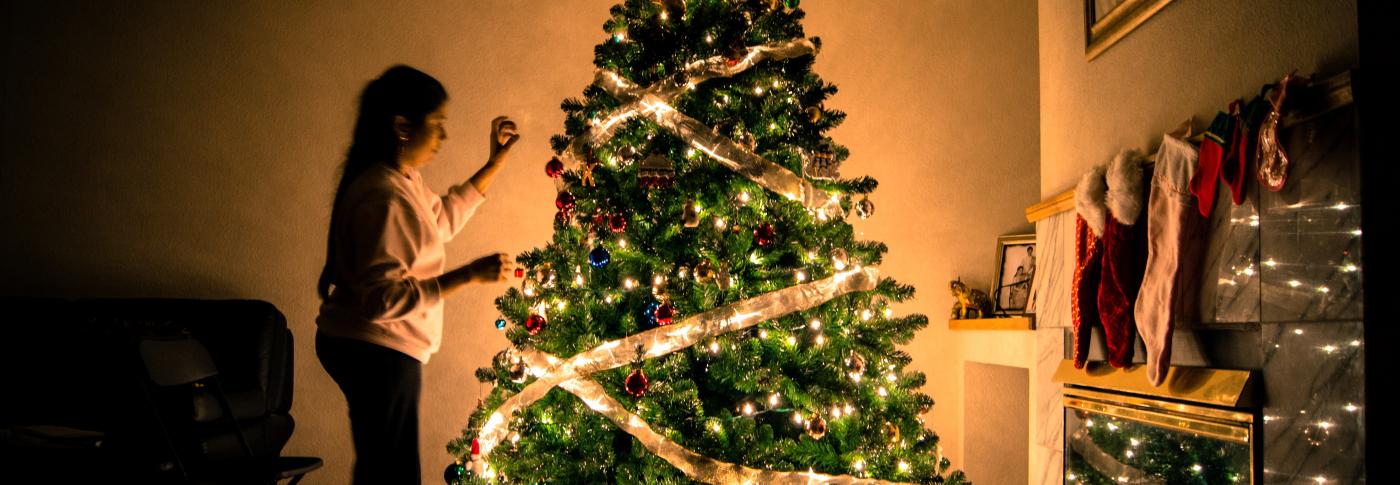
When is peak demand on Christmas Day? Will your Christmas be powered by renewable energy? Here's our festive Q&A!
17 Dec 2019 - 4 minute read
Is it busier than usual? Will your Christmas be powered by renewable energy? Roisin Quinn, our Head of National Control explains all about electricity on Christmas Day in this festive Q&A
Is it busier day than usual for the National Grid ESO control room?
Christmas day is actually a day when electricity usage is at one of its lowest points. Why? The cause for the lower demand during Christmas is simple – over the festive period schools, as well as a number of offices, shops and factories are closed.
It may not be a white Christmas, but is it a green one?
Us Brits love talking about the weather and we’re no different in the ESO control room as it has a big impact on demand for electricity and how green it is too. Last Christmas zero carbon sources generated 35% of electricity - if it’s mild and blustery then we expect similar figures this year, if not more!
Are more renewable sources used now? How is it changed over time?
Just like the overall electricity system is changing, Christmas is changing too. Back in 2009 23% percent of Christmas Day electricity was generated by coal, last year it was less than 4%. And it’s renewable or low carbon sources that are making up the difference. Festive electricity generated by wind power has risen from 0.3% in 2008 to 11% in 2018. 2016 was the greenest Christmas to date, with weather conditions and market factors meaning the last two were slightly ‘higher carbon’. Will 2019 be the greenest yet?
When is the peak demand for electricity?
It could be argued that the people of Great Britain are very much creatures of habit. Electricity demand usually rises as we get up and get to school or work, plateaus throughout the day, and then peaks at dinner time when we get home. But at Christmas, the normal pattern of electricity use is a bit different. On Christmas Day, the peak occurs earlier, at lunchtime as we switch on our ovens and cook our special Christmas feast. For example, on Christmas Day 2018 peak demand was for 36.6GW of electricity at 1.30pm.
The Queen’s Speech? Strictly Come Dancing or Call the Midwife? How Christmas telly effects demand for electricity
Like many of us the forecasters in our control room will be looking closely at the TV schedules for Christmas Day – not necessarily to see what to watch, but assessing which programmes will get the highest viewers and therefore cause the highest TV pickup. TV pickups are the increase in demand for electricity at the end of popular TV programmes when we get off the sofa as one and boil the kettle or open the fridge.
Last Christmas the biggest pickup was BBC One’s Call the Midwife; for 380MW, the equivalent of 190,000 kettles boiling at the same time. The largest ever Christmas Day pick up was in 1996 after an episode of Only Fools and Horses, measuring 1,340 megawatts. The same amount of electricity could have baked 30 million mince pies! Thanks to On Demand and catch up pickups are less common – but we’ll still be watching closely on Christmas Day!
Roisin Quinn, Head of National Control at National Grid ESO adds:
“The engineers in our control room work 24/7 to ensure a constant supply of electricity – and Christmas Day is no different.
Demand for electricity is usually low but we do get an insight into the nation’s habits, with a spike as ovens switch on for the festive feast and a drop as we all sit down to watch our favourite TV shows.
Many people will be watching the weather hoping for a White Christmas, and it has an impact on electricity too. If it’s mild and blustery then renewable sources will make up a significant proportion of the electricity used to cook turkeys and light up trees – perhaps even a record level.
These Christmas trends are an example of how the electricity system is changing. This year has been the greenest year on record for GB electricity, with the longest ever period of coal free electricity and record levels of wind and solar generation too. In April we announced our ambition to be able to operate the GB electricity system carbon free by 2025 – we look forward to more milestones next year.”
